Thailand isn't the only Asian country to crack down on street food
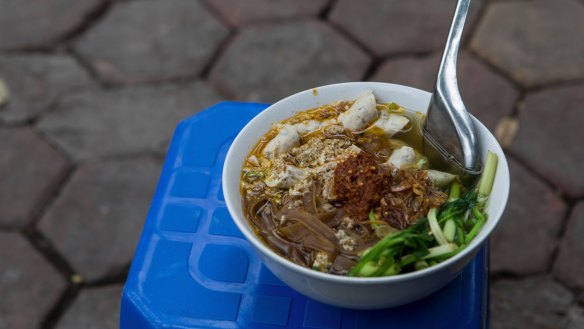
As strips of tofu sizzle beside her in a vat of oil, Nguyen Thu Hong listens for police sirens in Hanoi, Vietnam.
Police raids on sidewalk vendors have escalated sharply in downtown Hanoi since March, she said, and officers fine her about $9, or two days' earnings, for the crime of selling bun dau mam tom (vermicelli rice noodles with tofu and fermented shrimp paste) from a plastic table beside an empty store front.
"Most Vietnamese live by what they do on the sidewalk, so you can't just take that away," she said. "More regulations would be fine, but what the cops are doing now feels too extreme."
Southeast Asia is famous for its street food, delighting tourists and locals alike with tasty, inexpensive dishes like spicy som tam (green papaya salad) in Bangkok or sizzling banh xeo crepes in Ho Chi Minh City. But major cities in three countries are strengthening campaigns to clear the sidewalks, driving thousands of food vendors into the shadows and threatening a culinary tradition.
Officials say the campaigns in Thailand, Vietnam and Indonesia are largely aimed at promoting public order and food safety.
Eating street food was a way of life in Southeast Asia long before the region became popular with globe-trotting foodies like Anthony Bourdain and famous chefs started peddling classic street-food dishes in fancy Western restaurants.
In Bangkok, the military junta has been clearing vendors from spots where pedestrians have complained about littering, sidewalk congestion and vermin, officials said, and plans to move some into designated areas that would be more hygienic.
"Bangkok wasn't so crowded and congested" when the 1992 law regulating street vendors came into effect, said Vallop Suwandee, chairman of advisers to Bangkok's governor. "But now it is, so we have to reorganise and reorder public spaces."
According to government data, Bangkok now has fewer than 11,000 licensed vendors, about half the number it had two years ago.
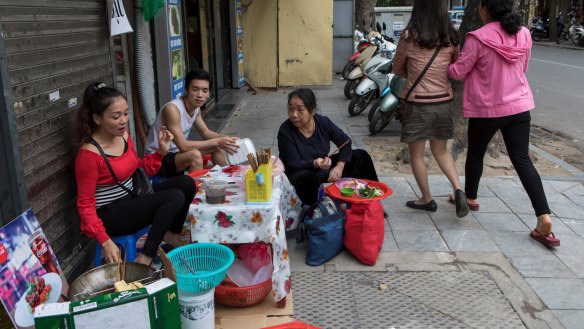
In Hanoi and Ho Chi Minh City, formerly Saigon, officials have led "sidewalk reclamation" campaigns in recent months that have received breathless coverage in the state-controlled news media and fuelled a nationwide debate about how to regulate street vending.
And in Jakarta, the Indonesian capital, authorities frequently evict hawkers or keep them in limbo by forcing them to pay thousands of dollars in annual "security" and "cleaning" fees that still do not guarantee a right to work. Since 2015, 17,000 sidewalk vendors have been moved into designated lots, city officials say, while an additional 60,000 or so still ply their trade wherever they can.
But in trying to modernise, these cities risk diluting their local flavour.
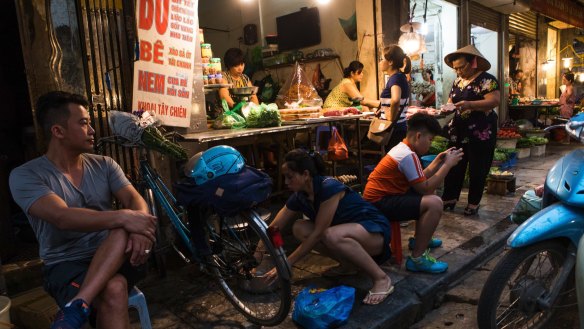
Eating street food was a way of life in Southeast Asia long before the region became popular with globe-trotting foodies like Anthony Bourdain and famous chefs started peddling classic street-food dishes in fancy Western restaurants.
Even today, as millions of Southeast Asian consumers develop a taste for pizza, burgers and air-conditioned shopping malls, the region's humble sidewalk stalls still appeal to eaters of nearly all social classes. It is not uncommon for groups of businesspeople to stop their luxury cars and plop down for a curbside plate of hoi tod, fried mussels, in Thailand or hu tieu, a noodle dish, in Vietnam that costs less than a Whopper would.
"Some vendors have been selling food around here for over 10, 20 years, and I feel as though they have become cooks for my family," Piya Joemjuttitham, a financial executive, said as he bought a mango smoothie from a sidewalk stand in downtown Bangkok.
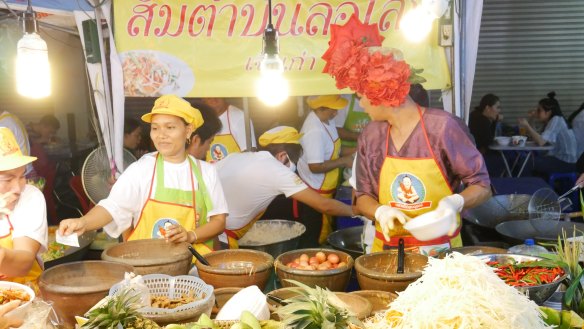
Some street chefs have devoted followers who line up early for a dish, and legions of diners contend that the best bun cha (barbecued pork with noodles) in Vietnam, like the best khao man gai (steamed chicken on rice) in Thailand, is found on city streets.
Returning to Vietnam after years abroad was "pure happiness," Hanoi-based, Vietnamese-American author Nguyen Qui Duc wrote. "But few things can compare to eating bun cha. In Hanoi. On the streets."
The fear here is that these chaotic cities will end up with sanitised food scenes like that of Singapore, a financial hub that began moving its street vendors into regulated food courts and hawker centres in the 1960s, promising them financial incentives in exchange for compliance with health and safety regulations.
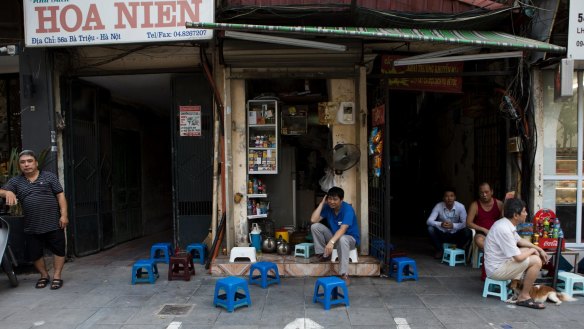
Peter Sousa Hoejskov, a food safety expert with the World Health Organisation in Manila, said the Singapore model was among the region's best for addressing links between street vending and food-borne disease.
But the price of the shift to hawker centres, some gourmands say, was atmosphere.
Many of the factors contributing to the changes in quality of hawker food - a rise in the use of imported ingredients, for example - would probably still have been factors if hawkers had stayed on the streets, said Cindy Gan, a food blogger in Singapore who grew up there in the 1970s.
"But what you lose is a certain cultural dynamism, I suppose, that you might associate with your childhood," she said.
And some experts say street food is not inherently less sanitary than restaurant food.
"If you're eating fried foods or things that are really steaming hot, then there's probably not much difference at all," said Martyn Kirk, an epidemiologist at the Australian National University.
The WHO and the Food and Agriculture Organisation of the United Nations are developing a code for street vending in Asia that would establish best hygiene practices and offer broad guidelines on how governments could regulate the industry.
Many street vendors are likely to find workarounds, dodging police when they show up and returning to their stations later. But the cat-and-mouse routine adds an extra degree of uncertainty to a stressful and low-paying job.
Hong, the Hanoi vendor, said her earnings had cratered by about 60 percent since the start of the crackdown, when she moved to her present location from a busy street corner as a hedge against police raids.
A vendor in central Bangkok who sells green papaya salad and would provide only her first name, Si, said she would consider returning to her hometown in Thailand's poor northeast if the crackdown intensified.
Others have no such options.
"At my age, I wouldn't know what else to do if I couldn't do this," said Nguyen Thi Nga, 55, who was selling oranges and apricots on a Hanoi sidewalk. "Even if I applied for a job, I wouldn't get it."
© The New York Times
Restaurant reviews, news and the hottest openings served to your inbox.
Sign up- More:
- Food travel